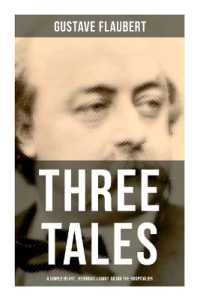Full Description
Since the 1960s, the existence of a largely noncommercial public broadcasting system has become a familiar feature of American cultural and social life. Most histories of broadcasting, however, overlook public radio's early development during the 1920s and 1930s by focusing on the mainstream, hegemonic practices of large commercial stations connected to networks. This focus on the development of the "American System" of commercial broadcasting as a master narrative has obscured the historical importance of alternative means of radio broadcasting and their complex interaction with dominant trends.
Employing extensive research from archives across the United States, Hugh Richard Slotten examines the origins of alternative broadcasting models based especially on a commitment to providing noncommercial service for the public. These stations, operated largely by universities and colleges, offered diverse forms of programming meant not merely to entertain but also to educate, inform, enlighten, and uplift local citizens.
Radio stations operated by institutions of higher education were especially significant because they helped pioneer the idea and practice of broadcasting in the United States. Faculty members in physics, electrical engineering, and other technical fields possessed the fundamental scientific knowledge and practical engineering innovation necessary for radio's propagation. Further, the established traditions of public service at universities, especially land-grant colleges in the Midwest, provided a robust framework for offering a publicly available, noncommercial alternative to the emerging commercial broadcast system.
Contents
List of Illustrations vii
Acknowledgments ix
Prologue 1
1. Public-Service Experimentation, Land-Grant Universities, and the Development of Broadcasting in the United States, 1900-1925 9
2. University Stations, Extension Ideals, and Broadcast Practices during the 1920s 40
3. Public-Service Broadcasting and the Development of Radio Policy, 1900-1927 80
4. The Federal Radio Commission and the Decline of Noncommercial Educational Stations, 1927-34 113
5. Education and the Fight to Reform Radio Broadcasting, 1930-36 152
6. Broadcast Practices and the Stabilization of Noncommercial Stations during the 1930s and 1940s 178
7. Network Practices, Government Oversight, and Public-Service Ideals: The University of Chicago Round Table 216
Epilogue 239
Abbreviations 251
Notes 257
Index 305








